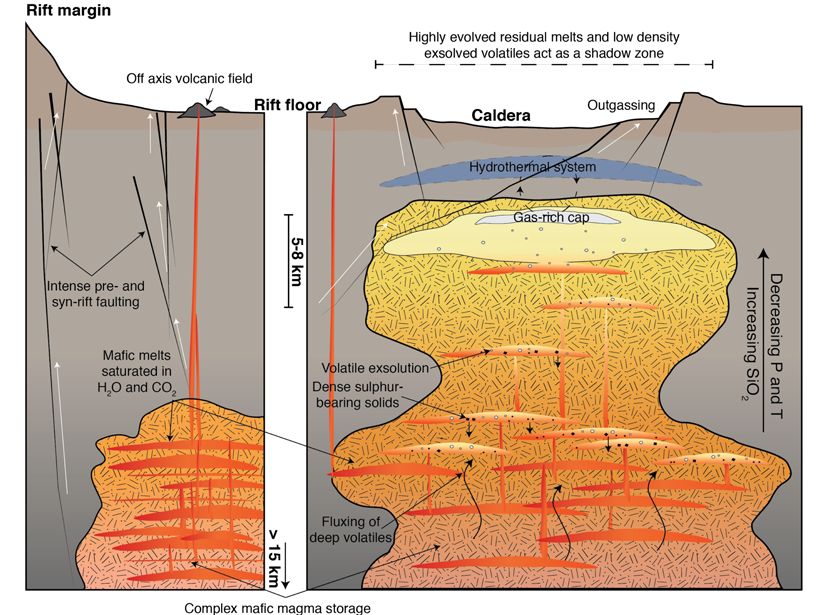Source: Geochemistry, Geophysics, Geosystems
The Main Ethiopian Rift, part of the larger East African Rift, is an example of an active continental rift, where tectonics and volcanism both play a role in the breaking up of a continent.
Iddon and Edmonds [2020] use petrological insights from volcanic samples to determine the depth of magma storage and their volatile content. This study bridges geophysical and petrological observations by providing constraints on magma compressibility and gas content, which sheds light on the geophysical signals captured in the Rift, e.g. conductivity, geodetic and seismic data and tomography.
Estimates of pressures are derived from the volatile composition of tiny increments of melt trapped in crystals. Magmas are stored throughout the upper crust (down to 15 kilometers) prior to eruption and they are very volatile-rich, perhaps even exceeding the amounts typically found in subduction zone magmas. Gases derived from these magmas provide fluids to overlying hydrothermal systems, drive extensive diffuse degassing of CO2, and impart significant compressibility to the upper parts of these magmas reservoirs.
This work provides fundamental constraints on the amount of volcanic gases (reactive sulfur and chorine gases for example) that we would expect to be injected into the atmosphere during future explosive volcanic activity and caldera-forming eruptions along the Main Ethiopian Rift system. These gas emissions would have severe environmental impact, posing risks for human health in Ethiopia and beyond.
Citation: Iddon, F., & Edmonds, M. [2020]. Volatile‐rich magmas distributed through the upper crust in the Main Ethiopian Rift. Geochemistry, Geophysics, Geosystems, 21, e2019GC008904. https://doi.org/10.1029/2019GC008904
—Claudio Faccenna, Editor in Chief, Geochemistry, Geophysics, Geosystems
Text © 2020. The authors. CC BY-NC-ND 3.0
Except where otherwise noted, images are subject to copyright. Any reuse without express permission from the copyright owner is prohibited.

